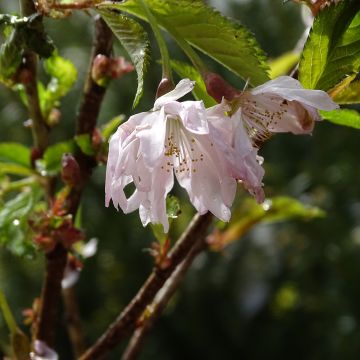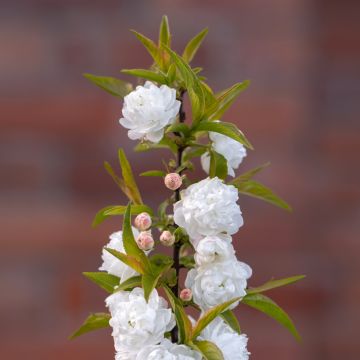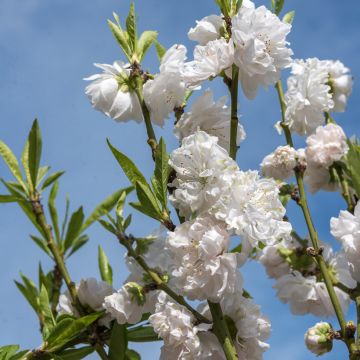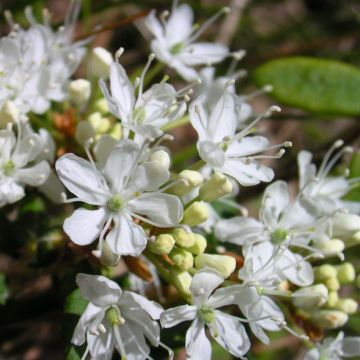

Prunus maackii Amber Beauty


Prunus maackii Amber Beauty


Prunus maackii Amber Beauty


Prunus maackii Amber Beauty


Prunus maackii Amber Beauty


Prunus maackii Amber Beauty


Prunus maackii Amber Beauty
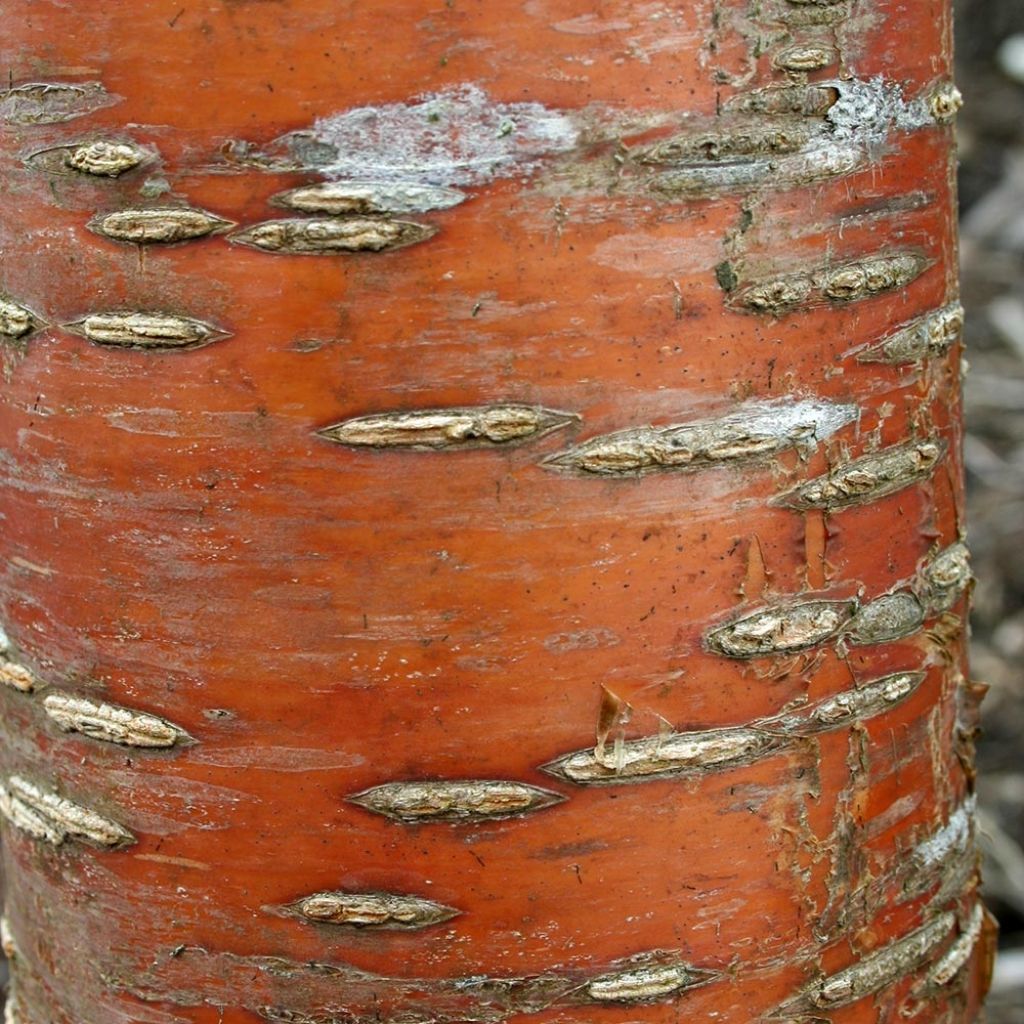

Prunus maackii Amber Beauty
Prunus maackii Amber Beauty
Prunus maackii Amber Beauty
Cerisier de Mandchourie
Very beautiful tree, well established But - the top was cut for shipping (2023), a shame for the balance, recovered now - disappointed by the more than discreet flowering. Will it become fuller with the years?
France, 12/05/2025
Special offer!
Receive a €20 voucher for any order over €90 (excluding delivery costs, credit notes, and plastic-free options)!
1- Add your favorite plants to your cart.
2- Once you have reached €90, confirm your order (you can even choose the delivery date!).
3- As soon as your order is shipped, you will receive an email containing your voucher code, valid for 3 months (90 days).
Your voucher is unique and can only be used once, for any order with a minimum value of €20, excluding delivery costs.
Can be combined with other current offers, non-divisible and non-refundable.
Why not try an alternative variety in stock?
View all →This plant carries a 24 months recovery warranty
More information
We guarantee the quality of our plants for a full growing cycle, and will replace at our expense any plant that fails to recover under normal climatic and planting conditions.
Would this plant suit my garden?
Set up your Plantfit profile →
Description
Prunus maackii Amber Beauty is a variety of Manchurian Cherry selected for the great beauty of its bark, and its slightly smaller size compared to the wild species. Combining qualities, this hardy small tree will delight with its shiny bark, of a superb bronzed copper and amber colour, which peels off beautifully. In spring, it offers clusters of delicately scented white flowers, followed by small black fruits. Its airy crown provides a light shade, very pleasant in summer, and its foliage turns golden yellow at the end of the season. This small tree tolerates both intense cold and hot, dry summers. It can be planted in a medium-sized or large garden, in an informal hedge or in a grove.
Prunus maackii, from the large family of Rosaceae, is native to a vast area ranging from Korea to neighbouring Chinese regions and eastern Siberia. Able to withstand Siberian winters, it is hardy down to -40°C (1°F). The 'Amber Beauty' variety was obtained in 1968 in the Netherlands by Van der Bom, Oudenbosch. This cherry tree, with rapid growth, forms in a short time a small tree with a single or multiple trunk supporting an open, ovoid crown, supported by upright and few branches. At maturity, it will reach 6 to 7m (20 to 23ft) in height with a spread of about 4.50m. The trunk, as well as the old branches, are covered with a very beautiful shiny bark, mixing warm tones, which peels off in flakes. The pleasantly fragrant flowering takes place in April, on the previous year's wood. It consists of upright, short and dense clusters, called raceme. Each cluster consists of very small cream-white flowers with five petals. This nectar-rich flowering is followed by the formation of small black, dry fruits. The young leaves appear before the flowers, they are downy when they open. They unfold into leaves measuring 8 to 10 cm (3 to 4in) long, ovate and pointed in shape, with dentate margins. They are medium green in summer and turn yellow before falling.
This easy-to-grow small tree only dislikes excessively wet, clay and compact soils, or excessively dry ones. It will naturally find its place in a free, flowering, rustic hedge or in a group of trees. It will grow in most of regions. For example, in a hedge or in a flower bed, it can be associated with other spring-flowering shrubs, which will flower simultaneous or staggered, such as ornamental apple trees, lilacs, Prunus mahaleb, field maple, quinces, medlars, dogwoods, viburnums, hawthorns...
Prunus maackii Amber Beauty in pictures


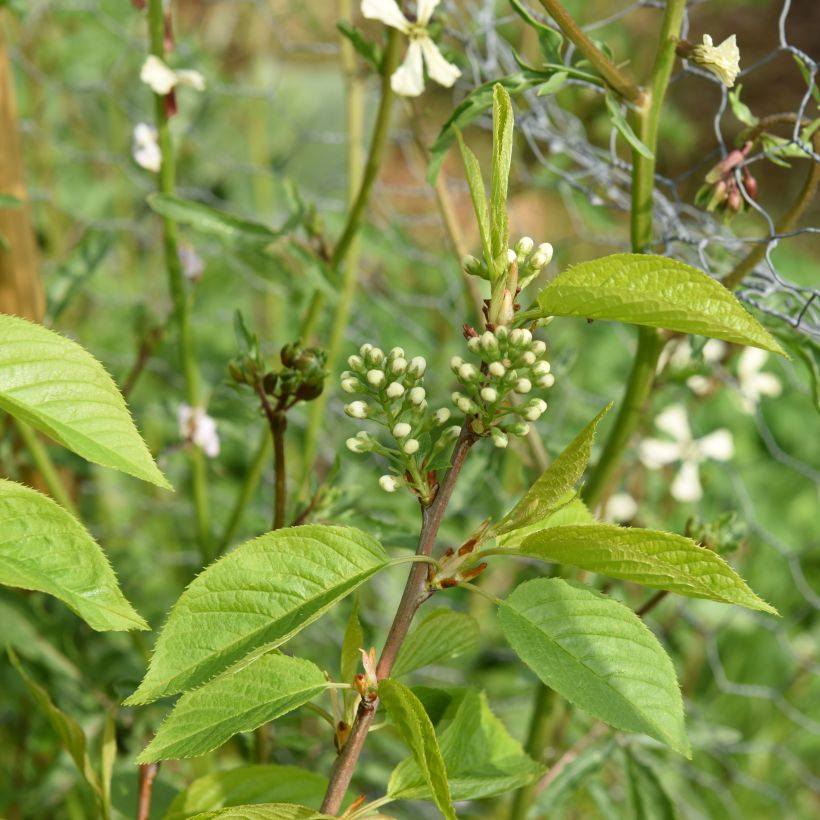

Plant habit
Flowering
Foliage
Botanical data
Prunus
maackii
Amber Beauty
Rosaceae
Cerisier de Mandchourie
Cultivar or hybrid
Other Prunus
View all →Planting and care
Prunus maackii Amber Beauty should be planted in spring or autumn, depending on the climate. It thrives in full sun and adapts to a wide range of soils, as long as they are well drained. Once established, it generally does not require watering in summer, unless the drought period extends beyond a few weeks. Water regularly during the first two or three years to help it establish. When planting, mix your soil with compost at a ratio of 50% and coarse sand if your soil tends to be clay. Dig a large planting hole. Apply a flowering shrub fertiliser every spring.
Planting period
Intended location
Care
Planting & care advice
-
, onOrder confirmed
Reply from on Promesse de fleurs
Similar products
Haven't found what you were looking for?
Hardiness is the lowest winter temperature a plant can endure without suffering serious damage or even dying. However, hardiness is affected by location (a sheltered area, such as a patio), protection (winter cover) and soil type (hardiness is improved by well-drained soil).

Photo Sharing Terms & Conditions
In order to encourage gardeners to interact and share their experiences, Promesse de fleurs offers various media enabling content to be uploaded onto its Site - in particular via the ‘Photo sharing’ module.
The User agrees to refrain from:
- Posting any content that is illegal, prejudicial, insulting, racist, inciteful to hatred, revisionist, contrary to public decency, that infringes on privacy or on the privacy rights of third parties, in particular the publicity rights of persons and goods, intellectual property rights, or the right to privacy.
- Submitting content on behalf of a third party;
- Impersonate the identity of a third party and/or publish any personal information about a third party;
In general, the User undertakes to refrain from any unethical behaviour.
All Content (in particular text, comments, files, images, photos, videos, creative works, etc.), which may be subject to property or intellectual property rights, image or other private rights, shall remain the property of the User, subject to the limited rights granted by the terms of the licence granted by Promesse de fleurs as stated below. Users are at liberty to publish or not to publish such Content on the Site, notably via the ‘Photo Sharing’ facility, and accept that this Content shall be made public and freely accessible, notably on the Internet.
Users further acknowledge, undertake to have ,and guarantee that they hold all necessary rights and permissions to publish such material on the Site, in particular with regard to the legislation in force pertaining to any privacy, property, intellectual property, image, or contractual rights, or rights of any other nature. By publishing such Content on the Site, Users acknowledge accepting full liability as publishers of the Content within the meaning of the law, and grant Promesse de fleurs, free of charge, an inclusive, worldwide licence for the said Content for the entire duration of its publication, including all reproduction, representation, up/downloading, displaying, performing, transmission, and storage rights.
Users also grant permission for their name to be linked to the Content and accept that this link may not always be made available.
By engaging in posting material, Users consent to their Content becoming automatically accessible on the Internet, in particular on other sites and/or blogs and/or web pages of the Promesse de fleurs site, including in particular social pages and the Promesse de fleurs catalogue.
Users may secure the removal of entrusted content free of charge by issuing a simple request via our contact form.
The flowering period indicated on our website applies to countries and regions located in USDA zone 8 (France, the United Kingdom, Ireland, the Netherlands, etc.)
It will vary according to where you live:
- In zones 9 to 10 (Italy, Spain, Greece, etc.), flowering will occur about 2 to 4 weeks earlier.
- In zones 6 to 7 (Germany, Poland, Slovenia, and lower mountainous regions), flowering will be delayed by 2 to 3 weeks.
- In zone 5 (Central Europe, Scandinavia), blooming will be delayed by 3 to 5 weeks.
In temperate climates, pruning of spring-flowering shrubs (forsythia, spireas, etc.) should be done just after flowering.
Pruning of summer-flowering shrubs (Indian Lilac, Perovskia, etc.) can be done in winter or spring.
In cold regions as well as with frost-sensitive plants, avoid pruning too early when severe frosts may still occur.
The planting period indicated on our website applies to countries and regions located in USDA zone 8 (France, United Kingdom, Ireland, Netherlands).
It will vary according to where you live:
- In Mediterranean zones (Marseille, Madrid, Milan, etc.), autumn and winter are the best planting periods.
- In continental zones (Strasbourg, Munich, Vienna, etc.), delay planting by 2 to 3 weeks in spring and bring it forward by 2 to 4 weeks in autumn.
- In mountainous regions (the Alps, Pyrenees, Carpathians, etc.), it is best to plant in late spring (May-June) or late summer (August-September).
The harvesting period indicated on our website applies to countries and regions in USDA zone 8 (France, England, Ireland, the Netherlands).
In colder areas (Scandinavia, Poland, Austria...) fruit and vegetable harvests are likely to be delayed by 3-4 weeks.
In warmer areas (Italy, Spain, Greece, etc.), harvesting will probably take place earlier, depending on weather conditions.
The sowing periods indicated on our website apply to countries and regions within USDA Zone 8 (France, UK, Ireland, Netherlands).
In colder areas (Scandinavia, Poland, Austria...), delay any outdoor sowing by 3-4 weeks, or sow under glass.
In warmer climes (Italy, Spain, Greece, etc.), bring outdoor sowing forward by a few weeks.
































